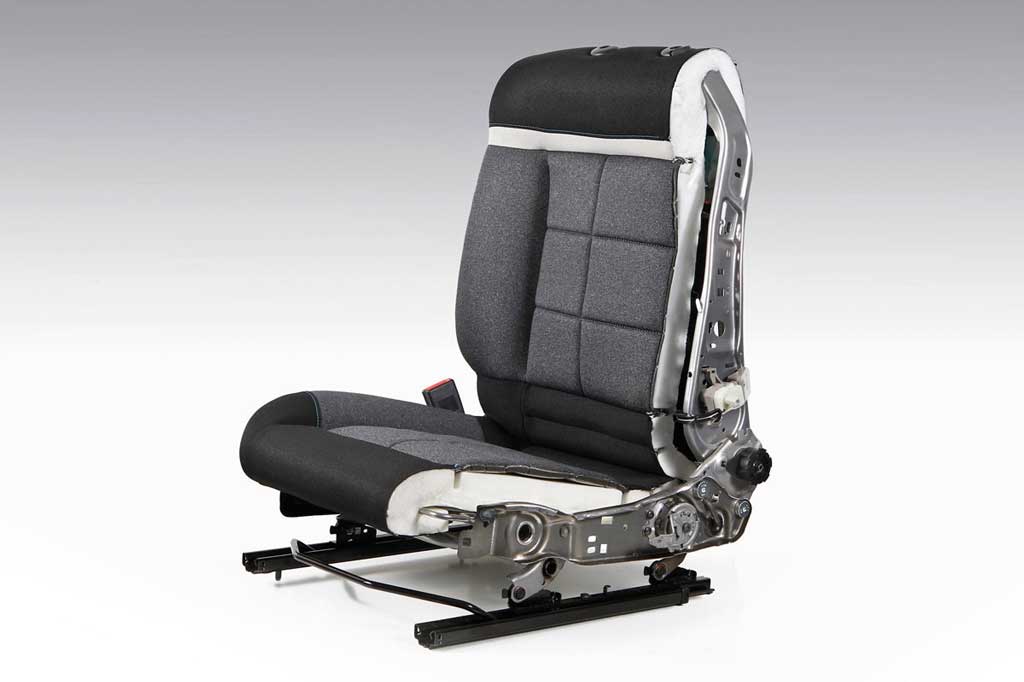
Citroën introduced its new Advanced Comfort technology back in 2017, and launched to the press in the form of a prototype of the now discontinued second generation 2018 C4 Cactus. Since then it has appeared in a number of Citroën models. It demonstrated some radical changes to the standard C4 Cactus, primarily in suspension system and seating. In many ways it was going back to basics for Citroën, with the disappearance of Hydractive suspension, the final form of hydropneumatic suspension that they had pioneered way back in the 1955 DS. Citroën Advanced Comfort took over the baton after many years of development work, with a determination to return to Citroën’s renowned values of comfort, but at a more achievable and acceptable cost. Starting with seating comfort, Citroën looked at practices in the bedding industry, where memory foam materials had made such a deep impression in recent times. Using layers of similar viscoelastic polyurethane foam, along with redesigned springs, Citroën developed shape memory seating that adapted to the body of each passenger, offering a totally new comfort experience in the mainstream automotive field. They decided that seats also had to look very comfortable, their research having established that a visibly soft seat considerably enhances passenger overall perception of comfort. Upholstery materials were selected with this in mind, with the silky grey cloth replicated in the dashboard trim, doors, and roof lining, suitably matched with a thicker carpet. The car as a whole was thus a far more inviting place to spend time in than a pre-facelift C4 Cactus, and most comparable cars of its time.
Far less visible, but possibly more important in Citroën’s overall comfort package, is the innovative suspension that their engineers have developed, employing their Progressive Hydraulic Cushion concept. The operating principle is fairly simple, and the execution certainly effective. Conventional suspension involves springing in some form, usually a coil spring, often integrated with a shock absorber, at both front and rear axles. When the spring is compressed almost to its limit, mechanical bump stops, usually made of rubber, are activated to prevent possibly damage from metal-to-metal contact. Each wheel in Citroën’s system employs two more sophisticated equivalent units – one each for compression and rebound limits – that are hydraulically assisted and have a considerable expansion and compression range. In effect they introduce two stages of combined springing and damping, effectively integrated to be virtually seamless in operation. In most motoring on smooth roads, involving relatively mild compression and rebound, the spring and shock absorber control the vertical body movement without needing the hydraulic cushions. The provision of the sophisticated wheel travel stops allows the main spring rates and damper settings to be chosen for somewhat softer action and, paired with carefully designed damping, provide the magic carpet ride that Citroën was targeting. As wheel displacements increase, on a bumpy road, or at higher cornering speeds, or with heavy loads, the hydraulic stops progressively come into action, resisting the extremes of spring compression and expansion, and eliminating any impact as the limits of travel approach. Unlike any conventional mechanical stop, the hydraulic cushion both absorbs and dissipates the considerable energy involved, eliminating any rebound effect. It took plenty of exhaustive research and road trials to optimise the system, but those who have driven cars with the system say it is a success.
Supporting the suspension and seating designs are other pieces of vital engineering that help enhance the overall effect of increased refinement. New types of structural bonding adhesive have improved the body stiffness, whilst new engine mounts, thicker window glass, and better noise insulation materials all contribute to reduced noise vibration and harshness (NVH) levels. The ultimate expression to date of Citroën Advanced Comfort is achieved in the new C5 X, where the progressive hydraulic cushion suspension is retained, but is further supplemented by active suspension technology on plug-in hybrid versions, to further improve comfort and roadholding. In this system four vertical position sensors and three wheel-speed sensors continually analyse road conditions and are used to determine the optimum configuration of the shock absorbers in real-time. The suspension of each individual wheel can be made softer or firmer, depending on the road conditions, or according to the driver’s requirement, by selection of one of three modes – Normal, Comfort, and Sport. Drivers and passengers are thus offered the extremes of optimum comfort, when cruising on straight and level roads, or more precise body control and sharper overall handling characteristics when the car is driven with greater enthusiasm.
© Motorworld Media 2023
Registered Office: 4 Capricorn Centre, Cranes Farm Road, Basildon, Essex. SS14 3JJ
Company Number: 8818356
Website designed by Steve Dawson